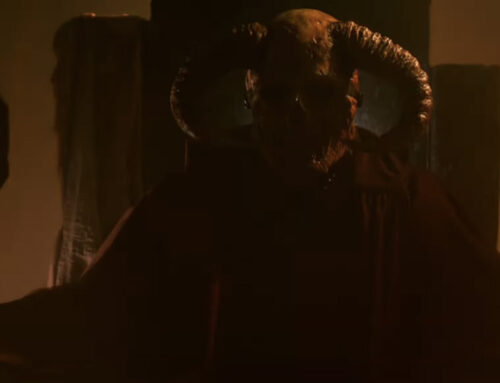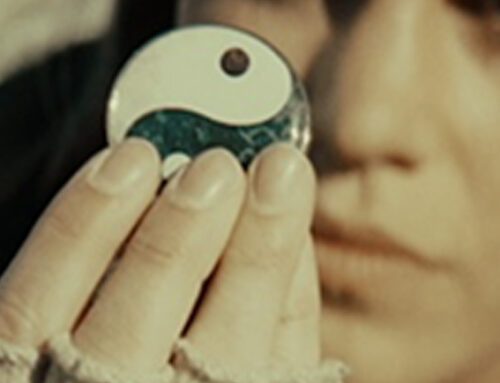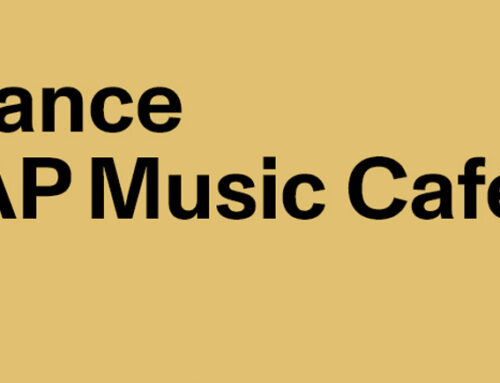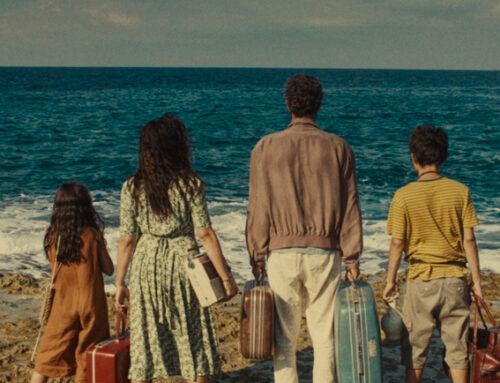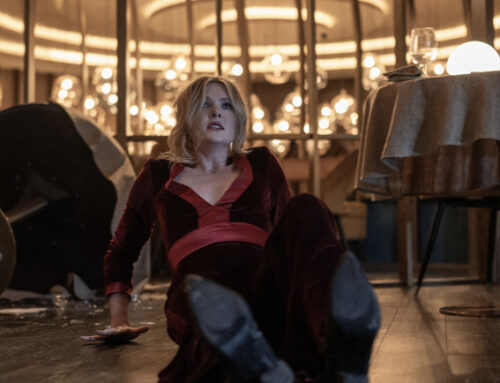 Lucy (Adele Perovic) and her sister are in trouble. They’ve agreed to rendezvous at a remote and lovely house on “Lost Gully Road”. Lucy’s sister is clear… only use the phone she gave her, turn off her cell phone, and don’t use any kind of social media. They’re on the run, and any means of tracking their location would ruin their whole plan.
Lucy (Adele Perovic) and her sister are in trouble. They’ve agreed to rendezvous at a remote and lovely house on “Lost Gully Road”. Lucy’s sister is clear… only use the phone she gave her, turn off her cell phone, and don’t use any kind of social media. They’re on the run, and any means of tracking their location would ruin their whole plan.
Unfortunately, it seems that something even more sinister is happening in the picturesque home on Lost Gully road… but whether that’s happening in real life or in Lucy’s head weighs heavily on her, and on us.
LOST GULLY ROAD is a classically spooky and slow ghost story, in spite of what the synopsis above might lead you to believe. The ghosts of Lucy’s past, the ghosts of her addiction, and the ghosts of the home and town around her all converge to create an unstoppably threatening force.
Perovic’s performance as the distant and mysterious Lucy is deliciously reigned in. More than ⅔ of the film, by my calculations, has Lucy completely silent. Perovic manages to make this silence absolutely pregnant with tension and pathos. It is simultaneously easy to sympathize with her and hard to grasp whether or not she is trustworthy: A fact that Lucy herself seems to be grappling with at each turn of this subtle haunt.
Beyond Perovic’s driven performance, this film also has some of the best scoring and sound design I’ve heard in a horror film in some time. Composers Dave Graney and Clare Moore create a perfectly dissonant and disconcerting palette of familiar but haunting tones: what seems to be strings and synthesizers, but all used a little differently than you might expect. The sound design by Gemma Stack carries most of this low-dialogue film, and the effort taken to make the visceral emptiness of this home and Lucy’s life is absolutely intrinsic to the success of the film itself.
The supporting cast is small but mighty – Jane Clifton portrays the mysterious but overly friendly owner of the home where Lucy stays. John Bumpton is the equally overly friendly shop owner down the road that triggers Lucy’s doubt and mental turmoil and throws her security and safety into question. Both actors approach these smaller characters with remarkable tenacity and ability and carry the heavyweight of being the only other lives in this isolated film remarkably well. While Perovic as Lucy was able to keep my rapt attention at every turn, Clifton and Bumpton provide just the perfect amount of distraction and distrust at pivotal moments along the way.
Beautiful cinematography by László Baranyai relies on natural lighting, dappled through the trees, and the crushing, creeping darkness of the house – which seems to become a character all on its own. We are reminded of Little Red Riding Hood as Lucy wanders the woods in her bright red winter coat, wondering along with her if she’s being hunted, stalked by something or someone we keep thinking we can almost see. The subtlety of the just off-kilter shots and strange angles utilizing doorways and mirrors just adds to the off-putting and distant storyline.
It’s an incredible undertaking for any filmmaker – the isolated location, the small cast, the intimate and risky story choices. Touches of classic French horror leaning on the drug-addled and nearly psychedelic, a trippy look into femininity and mental illness and where those two overlap… it’s no wonder to me that this unique perspective comes from Down Under. There are shades of another film from Australia that I loved… Jennifer Kent’s THE BABADOOK. A uniquely un-American point of view is what drives the heart, mind, and horror of LOST GULLY ROAD.
Get yourself comfortable, open a bottle of wine, and turn on LOST GULLY ROAD. Watch it alone. Just make sure to leave the lights on (and whatever you do don’t use your cell phone!)
| Lost Gully Road | ||
| RATING: | UR | |
| Runtime: | 1 hr 20Mins. | |
| Directed By: |
|
|
| Written By: |
|
|

